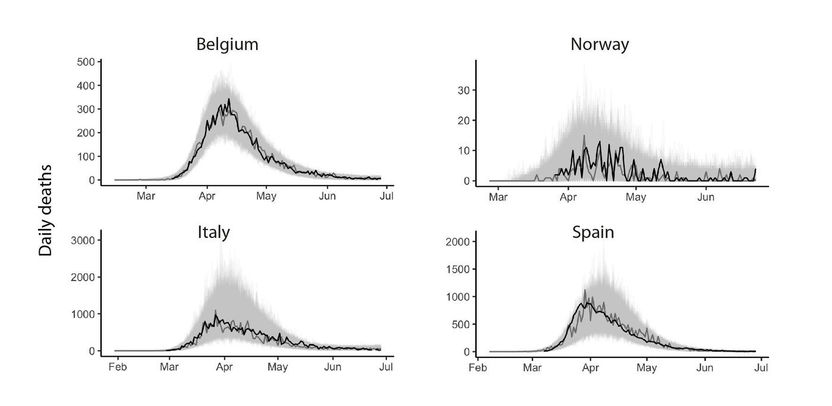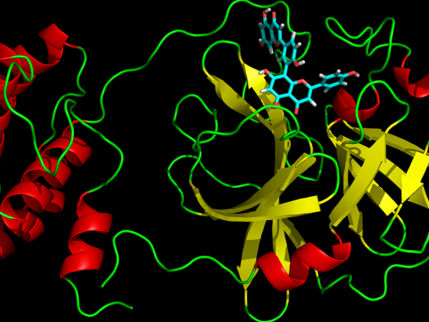Flu may increase the spread of Covid-19
Researchers show in mathematical model that flu may facilitate the spread of Covid-19
Scientists at the Max Planck Institute for Infection Biology in Berlin and the Institut Pasteur in Paris used a mathematical model to study the first months of the corona pandemic in Europe. They show that the decrease of Covid-19 cases in spring was not only related to countermeasures but also to the end of the flu season. influenza may have increased transmission of the coronavirus by an average of 2.5-fold. The results of the study suggest that the coming flu epidemic will have a amplifying impact on the Covid-19 pandemic. The researchers emphasize the potential importance of flu vaccinations as a possible extra protection against Covid-19. The study was already pre-published on medRxiv and has not yet been peer reviewed.

The researchers checked their mathematical model against the pandemic data of four countries. The black line shows the actual daily deaths, the predictions of 1000 simulations of the model are shown in light grey, the dark grey line traces a single prediction.
© Max Planck Institute for Infection Biology
Data from earlier experiments led the team around the mathematician Matthieu Domenech de Cellès to investigate the effects of a co-infection with coronavirus and flu. The French mathematician focuses on the effectiveness of vaccination programs and the seasonality of infectious diseases such as influenza. When the first Covid-19 cases occurred in Europe at the beginning of the year, he wanted to apply his knowledge in epidemiological models to the new pandemic. Together with researchers from Paris and Lyon, he developed a mathematical model of coronavirus transmission and mortality to decipher the influence of the flu season on the Covid-19 pandemic.
The researchers modelled the course of the pandemic in Belgium, Norway, Italy and Spain. Four European countries in which the pandemic was differently pronounced during the first half of the year. To approach the real infection events, the model was based on known disease parameters like the "generation interval", i.e. the time needed for an infected person to infect another person. The researchers also took non-pharmaceutical countermeasures into account, since lockdowns and social distancing had an extensive impact on the pandemic. This was measured by the so-called Stringency Index, a value developed by Oxford University, which indicates the "strictness" of government anti-coronavirus measures.
2.5-fold average increase of coronavirus transmission
After mathematically recreating the pandemic, the researchers were able to test various assumptions about the impact of the flu season. They checked if the model was more realistic under the assumption that influenza either reduces, increases or does not influence the transmission rate of coronavirus. The team showed that influenza may have increased coronavirus transmission at the population level by 2 to 2.5 times, on average during the period of co-circulation. The researchers checked their model against data on daily deaths in the four countries. This enabled them to demonstrate that their model is consistent with the observed pandemic mortality data. Without the amplifying impact of influenza, the model explained the observed data substantially less well–with significantly lower Covid-19 infection rates.
It remains open whether influenza patients are more likely to transmit coronavirus to others or whether flu makes people more susceptible to corona–though the latter seems more probable according to the researchers. Other research groups recently showed that flu viruses may increase susceptibility to Covid-19 in patients: Influenza viruses cause a higher production of the receptors that are used by the coronavirus to dock to human respiratory cells.
Seasonal flu shots may now be even more important
The researchers’ results have consequential implications: Vaccinating against influenza may be essential in the coming flu season. Not only to relieve hospitals, but also to contain the potential effect of influenza on the transmission of coronavirus.





















































